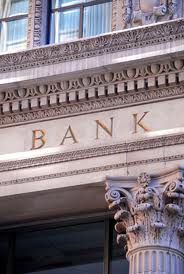 Based on the results of the Federal Reserve’s stress tests, the nation’s 18 largest banks would collectively lose a massive $462 billion under an extremely adverse hypothetical economic scenario.
Based on the results of the Federal Reserve’s stress tests, the nation’s 18 largest banks would collectively lose a massive $462 billion under an extremely adverse hypothetical economic scenario.
Reflecting the severity of the stress scenario–which includes a peak unemployment rate of 12.1 percent, a drop in equity prices of more than 50 percent, a decline in housing prices of more than 20 percent, and a sharp market shock for the largest trading firms–projected losses at the 18 bank holding companies would total $462 billion during the nine quarters of the hypothetical stress scenario. The aggregate tier 1 common capital ratio, which compares high-quality capital to risk-weighted assets, would fall from an actual 11.1 percent in the third quarter of 2012 to 7.7 percent in the fourth quarter of 2014 in the hypothetical stress scenario.
The Fed noted that they used “deliberately stringent” criteria in their stress tests to assess the ability of the nation’s largest banks to withstand major economic shocks. The severely adverse economic scenario used in the Fed’s stress tests would exceed any economic calamity the U.S. has faced in the last 100 years except for the Great Depression.
The Federal Reserve also noted that in the aftermath of their hypothetical economic disaster scenario, the actual Tier 1 common ratios of the nation’s 18 largest banks would still exceed still exceed aggregate common ratios of 5.6% during the depths of the financial crisis in 2008.
The Tier 1 common ratio is an important measurement of a bank’s ability to withstand losses during a crisis and be able to continue to lend to businesses and consumers even during times of great economic stress. The Tier 1 common ratio is the sum of retained earnings and common stock divided by total risk adjusted assets.
Although this is the third time that the Federal Reserve has stress tested the nation’s major banks since 2009, it is the first time the tests have been conducted under the requirements of the Dodd-Frank Act.
Next Thursday, in the second part of the stress tests, the Federal Reserve will release the results of its study on capital adequacy as it relates to dividend increases and share repurchases. Based on the Fed’s determinations, the biggest banks will find out if they will be allowed to increase shareholder payouts. In previous years, requests for higher dividend payments by Bank of America and Citigroup were turned down by the Fed.

